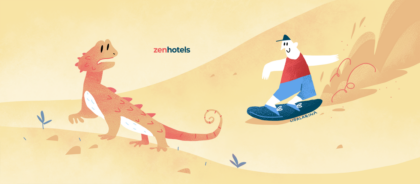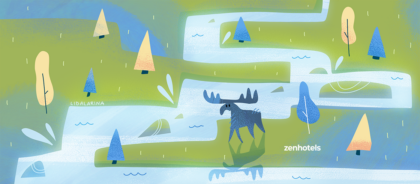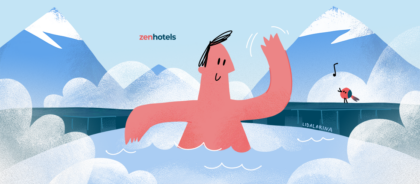Contents
- The geography and climate of the Atacama desert
- Salt flats, geysers, dunes, and more
- What about flora, fauna, and wildlife?
- The interesting history
- Unique weather patterns
- It’s an ideal location for space research
- Travel tips and recommendations
- Essential preparations
- Get a booking with ZenHotels
The geography and climate of the Atacama desert
The Atacama stretches across northern Chile and reaches the south tip of Peru, bordered by the Pacific Ocean to one side and the Andes Mountains to the other to the east. The terrain is a diverse mix of salt flats, sand dunes, rocky peaks, and barren landscapes, contributing to its reputation as one of the most surreal places on Earth.
The coastal strip is known as the “Litoral,” where the cool waters of the Humboldt Current create a sharp climatic contrast, leading to fog and low clouds along the coast. Despite its proximity to the ocean, the environments aridity remains, with very little precipitation reaching inland areas.
Certain parts of the have recorded no significant rainfall for centuries, which has severely dried out the land over time. The resulting conditions create a unique and harsh environment that challenges life to adapt in extraordinary ways.
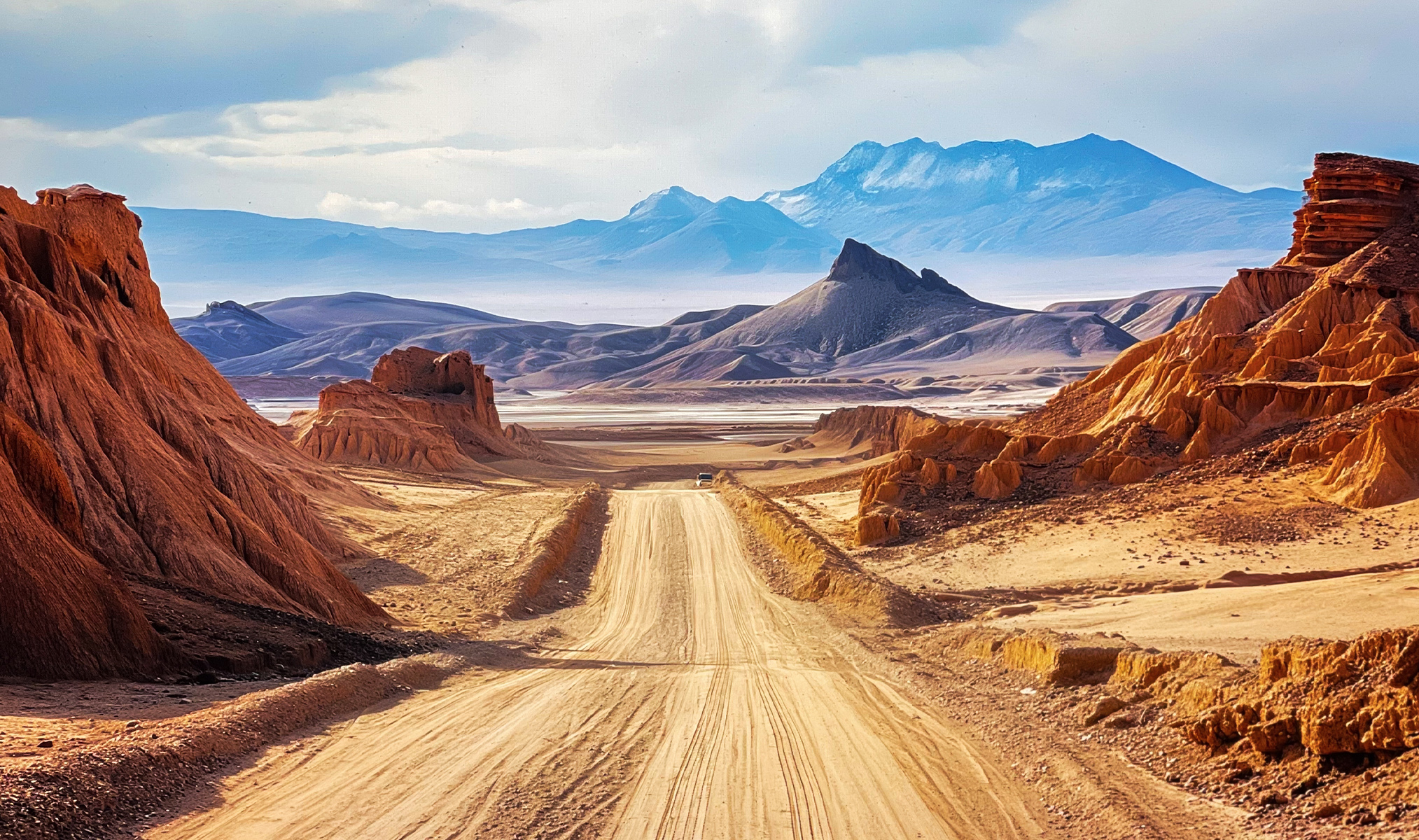
Photo: Daria Aleshina/ Shutterstock.com
Salt flats, geysers, dunes, and more
Several features make the Atacama desert unique, one of which is salt flats such as the Salar de Atacama. These flat areas are the remnants of a once-existing lake. Over time, the climate change led to the lake drying up, leaving behind only a bed of salt and minerals. You can walk across these regions and enjoy an unobstructed view as far as the eye can see.
El Tatio geyser field is another remarkable landmark, ranking as the third highest geyser field globally. The area boasts over 500 geysers, showcasing the natural display of the powerful underground geothermal activity. The pressure of steam trapped underground causes water to burst into the air, creating eruptions several feet high.
Another popular landmark is the Valley of the Moon (Valle de la Luna), which features large sand dunes and rock formations. Because of its uniqueness and resemblance to a lunar surface, this valley is a popular destination for hikers and photographers.
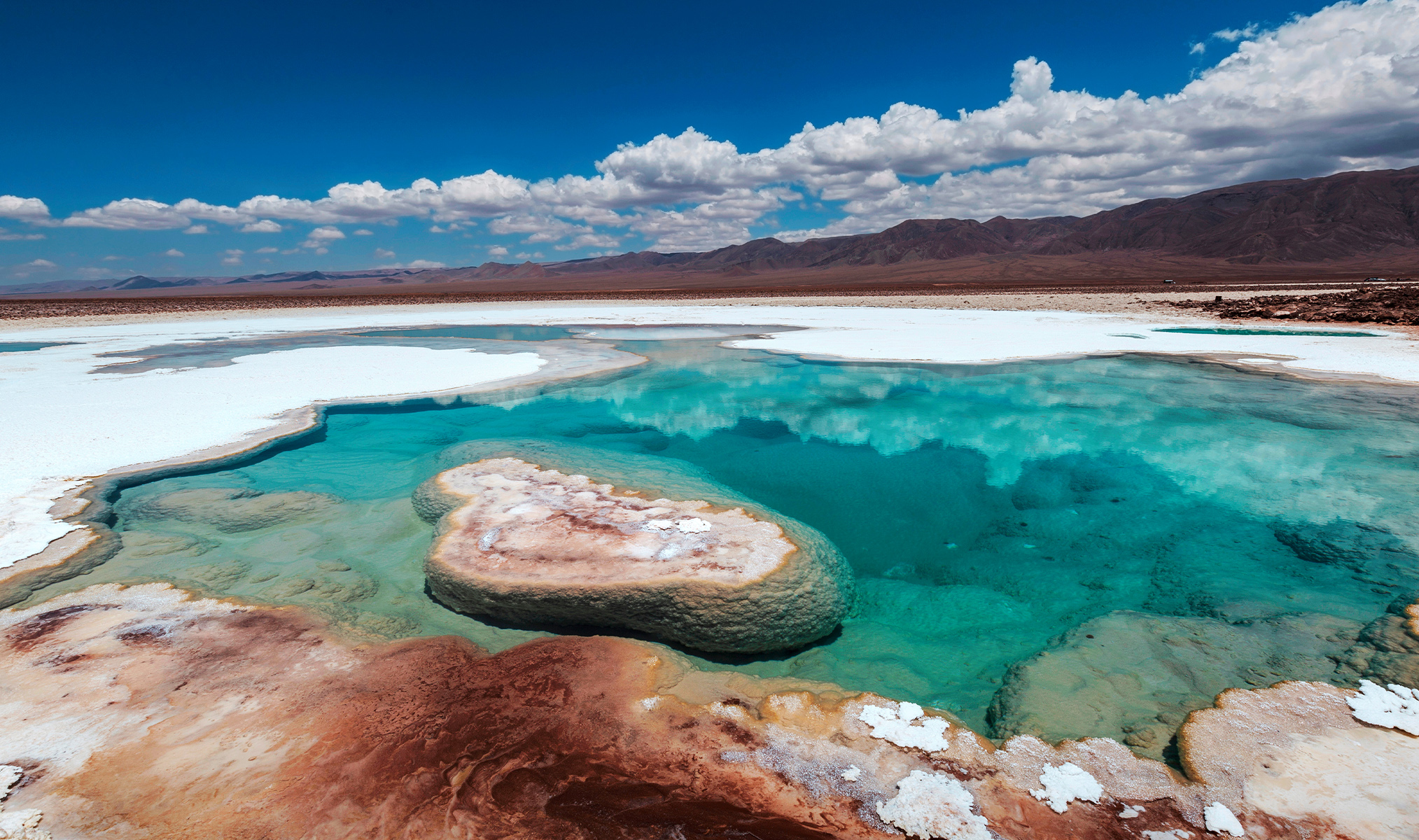
Photo: sunsinger/ Shutterstock.com
What about flora, fauna, and wildlife?
Despite the extreme conditions, you will be surprised to learn that the Atacama Desert is home to a variety of flora and fauna uniquely adapted to survive in the harsh conditions presented. For example, plant species such as cacti, shrubs, and grasses thrive in isolated pockets where moisture is available.
The desert is also home to a variety of wildlife, including resilient insects, reptiles, and small mammals that can thrive with minimal water and seek shelter under rocks and branches. Some insects and small creatures may even burrow beneath the sand to stay cool.
Furthermore, flamingos can be found in the coastal part. Often, flocks will hang out temporarily on feeding on the algae and brine shrimp that inhabit the shallow waters surrounding the area. Other animals, such as lizards and foxes, can also be spotted, typically closer to water sources or towards the Andes Mountains.
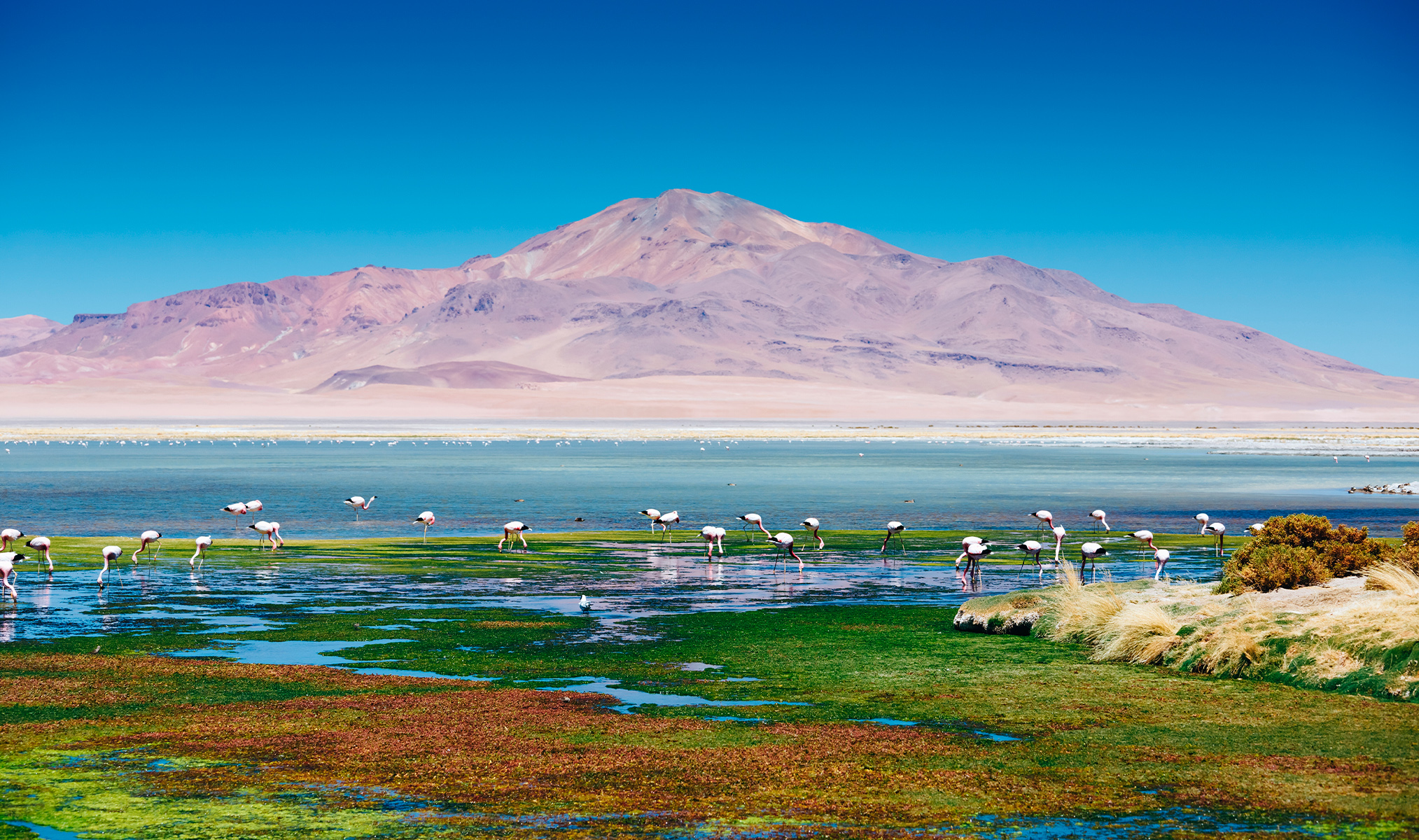
Photo: Olga Danylenko/ Shutterstock.com
The interesting history
For thousands of years, this land has been home to Indigenous Chilean cultures like the Atacameño people. These communities have developed unique ways to not only survive but also thrive in the harsh environment by using their knowledge of the land and its resources. Their rich cultural heritage and traditions are specifically adapted to the desert climate, and they have passed the knowledge down for generations. Today you will find Chilean communes and communities living in Calama, a small portion of the desert.
Throughout the desert, you can find archaeological sites and ancient ruins that offer glimpses into its historical significance. The most popular sites include the Pukará de Quitor, a pre-Columbian fortress, and the Chaxas Lagoon, where evidence of early human settlement has been found. The dry climate has helped preserve many artifacts, providing valuable insights into the lives of its ancient inhabitants.
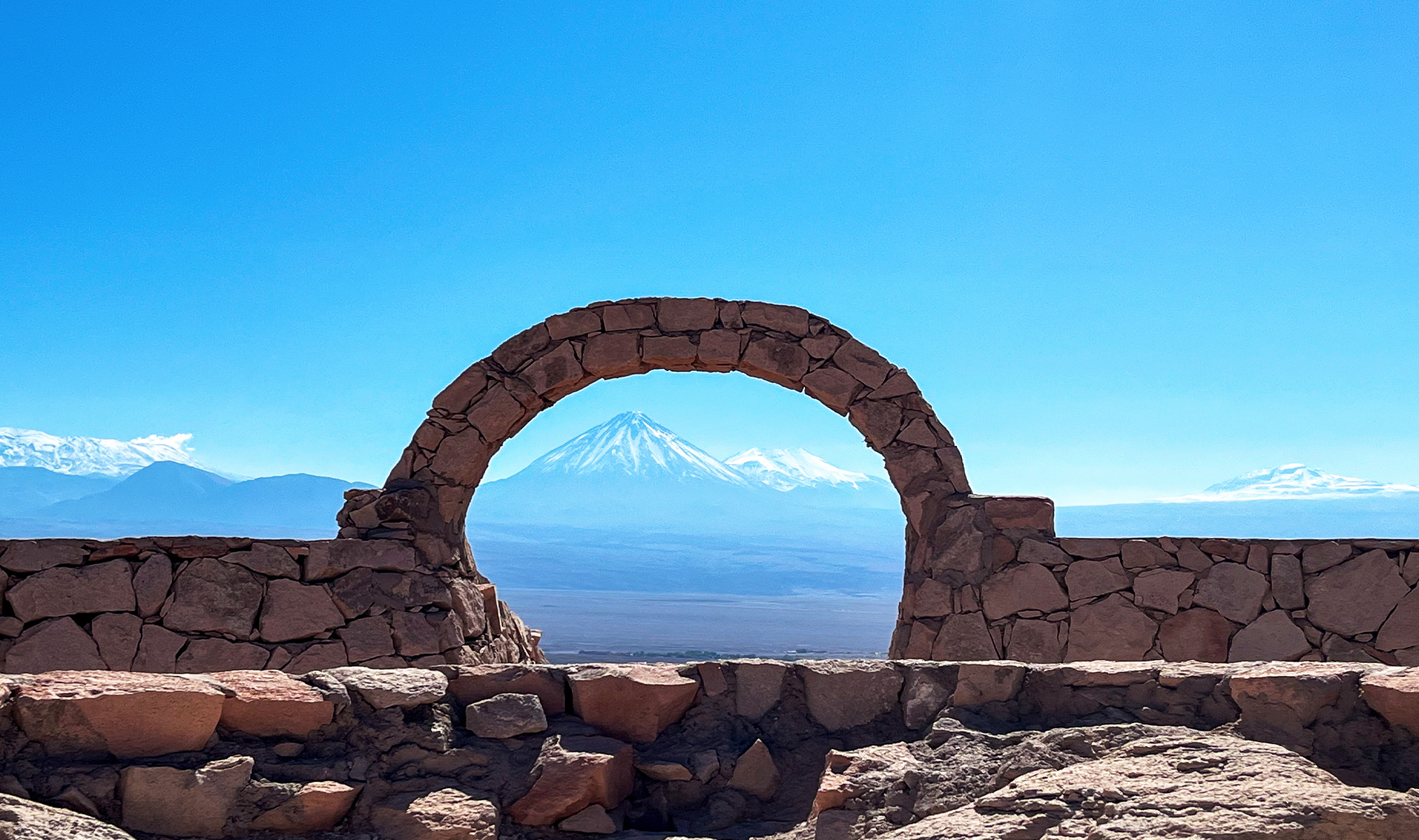
Photo: juliasuzin/ Shutterstock.com
Unique weather patterns
Because of its intense climate and coastal location, an interesting phenomenon called “camanchaca” occurs. This unique weather pattern is a dense fog that rolls in from the ocean on occasion and creates the ideal but rare conditions for rain. When camanchaca occurs, the land undergoes a transformation named “desierto florido,” which translates to “blooming desert.” The rain accompanying the fog awakens dormant seeds beneath the sandy ground, causing them to sprout and transform the region into a blooming landscape filled with new life and vibrant colors.
It’s an ideal location for space research
The Atacama’s clear skies are among the best for astronomical observations. With minimal light pollution and dry air that reduces atmospheric interference, it offers an unparalleled view of the cosmos. Scientists from around the globe flock to the Atacama to take advantage of these optimal conditions.
In addition to its optical advantages, the hyper-arid climate provides an ideal environment for studying the building blocks of life. The extreme dryness of the area preserves organic materials and microorganisms in a manner similar to conditions found on Mars, making it an excellent analog for Martian research.
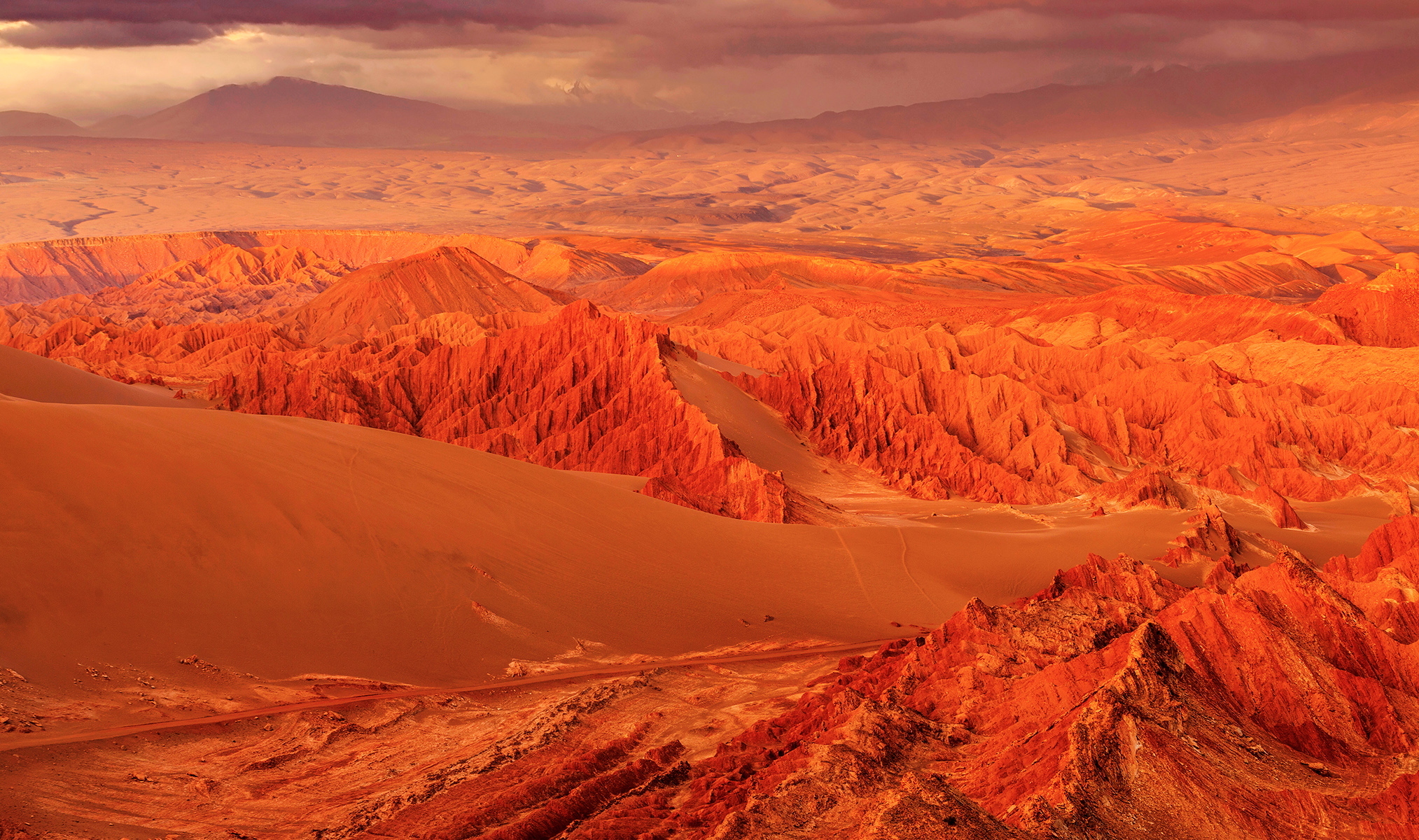
Photo: sunsinger/ Shutterstock.com
NASA and other space agencies have also used the territory as a proving ground for rovers and other equipment designed for Martian exploration. The challenging terrain, with its rocky surfaces, large dunes, and extreme conditions. They have been known to practice drilling and pulling up soil from Atacama before being sent off to Mars.
Travel tips and recommendations
Best times of the year to visit
Certain seasons are better than others for visiting the Atacama Desert. The peak seasons are spring and fall, as they offer moderate temperatures and pleasant weather.
Here are some insights into the best times to visit:
- Spring (September to November): Moderate temperatures and pleasant weather
- Fall (March to May): Moderate temperatures and pleasant weather
- Winter (June to August): Temperatures can be quite chilly, especially at elevated altitudes, so dress warm!
- Summer (December to February): Summertime brings hotter temperatures but also the possibility of witnessing the blooming desert.
Choose your hotel wisely
Choosing the right hotel can greatly enhance your experience, providing comfort and a perfect base for your explorations. Both location and comfort, as well as affordability should be considered when booking. With that said, try to book a hotel in or near San Pedro de Atacama or Calama. This will ensure you are close to all of the popular landmarks.
Essential preparations
Heading to the Atacama Desert? Make sure to pack lots of water, sunscreen, and clothes for both hot days and chilly nights. Don’t forget some sturdy hiking boots for trekking through the rough landscape.

Photo: New Africa/ Shutterstock.com
And finally, take your time adjusting to high altitudes to avoid altitude sickness. This is especially important if you’re planning to visit places like the El Tatio geysers, where the altitudes reach 14,000+ feet above sea level. While traveling, remember to stay hydrated and fuel your body with food.
Get a booking with ZenHotels
If you are ready to start planning and booking your trip, consider using ZenHotels to access the best hotels in the area at the most affordable rates.
ZenHotels offers a wide selection of accommodations to suit various preferences and budgets. From luxury resorts to cozy guesthouses, you can book the perfect place to stay.

